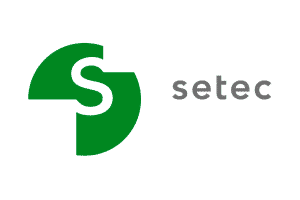Blog [Environment]
Shells and Co. 🐚 ... ... scrutinized by the SETEC IN VIVO design office
Setec In Vivo reveals the results of studies related to species living on and in the seabed, called benthic biocenoses . Conducted since 2012 to date, the objective was to identify their presence and distribution to ultimately assess the environmental impact of the establishment of an offshore wind farm in the Bay of Saint-Brieuc.
These studies continued after obtaining authorizations and were supplemented with, in particular, bibliographic studies on the effects of turbidity and laboratory studies on the effects of noise on these communities.
🔎 What are benthic biocenoses?
Benthic biocenoses are organisms living in connection with the seabed.
We speak of infauna* when the species are in the substrate, such as for example certain shells which live buried in the sand, and of epifauna* when the organisms live on the seabed, such as for example brittle stars or sea urchins .
-
P * Epifauna
Epifauna the name for the biology of bottom-dwelling aquatic animals, benthos, living in fresh or salt water, as well as terrestrial animals living on vegetation, or even on another animal.
-
P * Endofauna
We speak of infauna for animals living inside soft substrates. By extension, we also speak of infauna for animals living inside a benthic animal.

Study and results
- P A precise inventory
The studies carried out made it possible to identify the species present and their distribution in the project area.
In the center of the implantation area, we find, for example, a carpet of brittle stars , as well as coarse gravelly sediments with venerid bivalves over a large majority of the potential implantation area.
Conversely, algal biocenoses are very little present in this area.
- P The consequences of the construction of the park in the defined area
Once this inventory has been carried out, the impact study made it possible to define a priori the potential impacts of the project on the environment, during the construction phase and during the operation phase of the park.
During the construction phase, several potential impacts were characterized.
On the other hand, it is important to specify that these impacts will be limited in space and time. Modeling and bibliographic studies carried out on turbidity, by a group led by Actimar , have demonstrated a low impact on the environment. As for the potential effects of noise on organisms, recent and unprecedented studies carried out in partnership with the CNRS have demonstrated that noise during the construction phase is not likely to kill scallops.
In the operating phase, a positive effect is expected with the reef effect.
SETEC IN VIVO maintains its monitoring

Monitoring the effects and consequences of the construction of the offshore wind farm is necessary in order to evaluate the strict effects of the project. As a result, numerous means are put in place to concretely measure the effects of the project on the environment .
SETEC IN VIVO will relaunch its data entry by once again monitoring benthic biocenoses. This marine exploration will make it possible to analyze possible ecological change.
